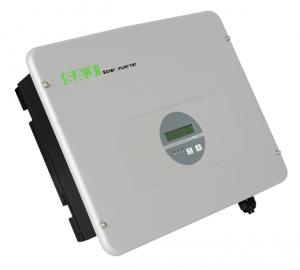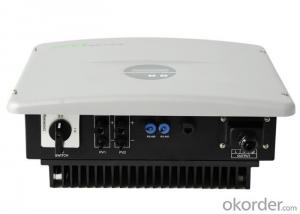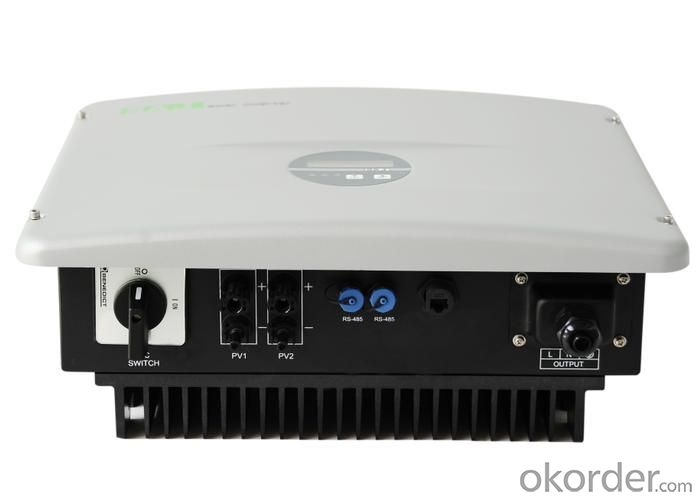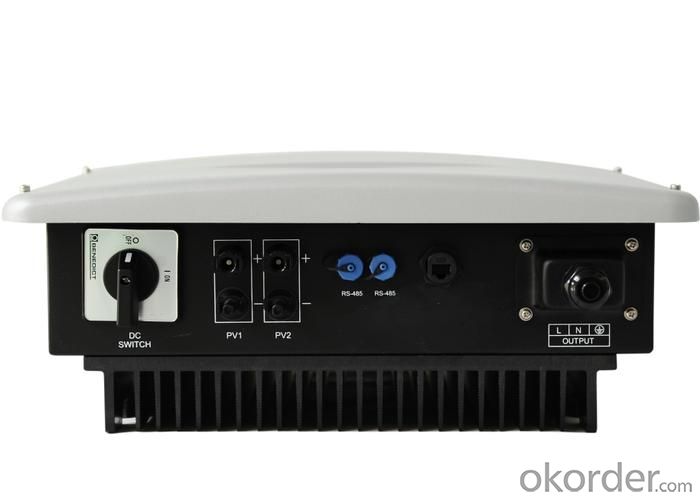on grid Solar Inverter Sununo-TL4KB with 1 MPPT
- Loading Port:
- Guangzhou
- Payment Terms:
- TT OR LC
- Min Order Qty:
- 1 pc
- Supply Capability:
- 3000 pc/month
OKorder Service Pledge
OKorder Financial Service
You Might Also Like
1.Flexible
• Ethernet / Wi-Fi communication
• Wide range of DC input voltage
• IP65 for indoor and outdoor use
2.Reliable
• Comprehensive protection functions
• Compact design, fanless
• First-class components
3.Efficient
• Max. efficiency up to 97.7%
• Euro. efficiency up to 97.1%
• MPPT accuracy up to 99.9%
4. Certificates: TUV,SAA,G83,ISO9001,ISO14001,etc.
Futures
■ Super junction MOSFET integrated with 97.7% Max. efficiency.
■ Wide MPPT voltage range and low minimum MPPT voltage for flexible configuration.
■ Transformerless design for lower cost and compact size.
■ IP65 and fan-less for longer-term reliability.
■ Ethernet/ Wi-Fi communication interface.
■ Integrated Web Server for local and internet monitoring.
■ Support SAJ Web Portal Monitoring Solutions.
| Model | Sununo-TL3KB | Sununo-TL4KB |
| Max. DC power [W] | 3400 | 4500 |
| Max. DC voltage [V] | 580 | 580 |
| MPPT DC voltage Range [V] | 120-500 | 120-500 |
| Nominal DC voltage [V] | 360 | 360 |
| start voltage [V] | 150 | 150 |
| Min.DC voltage [V] | 100 | 100 |
| Max.DC input current [A] | 17 | 20 |
| Number of MPPT | 1 | 1 |
| string per MPPT | 2 | 2 |
| DC switch | optional | optional |
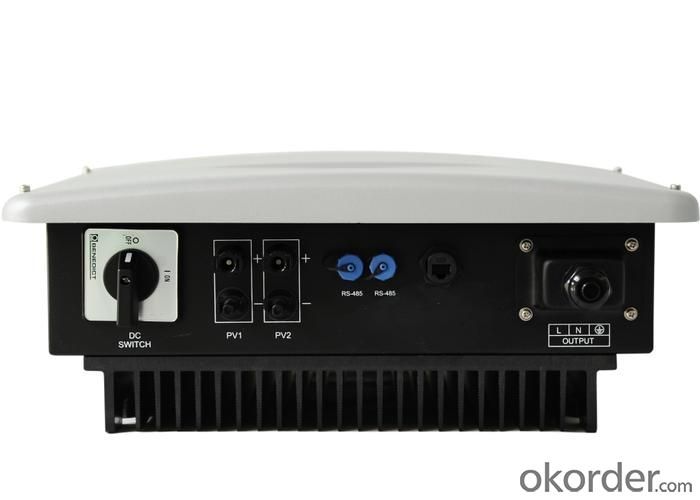
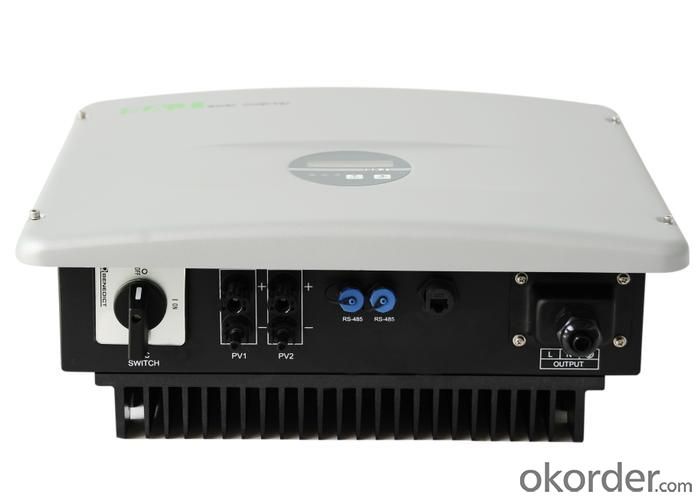
1. How can I get after sale service?
We have established after sale service center in Europe, North America, south East Asia, etc. you can email us or call the hot line.2. Do you have shipping insurance for our goods?
We will buy shipping insurance according to customers’ demand.
3. Do you accept OEM or customized design?
OEM & ODM, any your customized lightings we can help you to design and put into product.
4. What if I need specific design?
Distributorship are offered for your unique design and some our current models.
- Q: What is the typical lifespan of the capacitors in a solar inverter?
- The lifespan of capacitors in a solar inverter can differ based on various factors including component quality, operating conditions, and stress levels. On average, the expected lifespan is approximately 10 to 15 years. Capacitors serve a vital role in a solar inverter as they store and release electrical energy. They assist in voltage regulation, smoothing out power fluctuations, and providing stability to the electrical system. Several factors influence the lifespan of capacitors in a solar inverter. The quality of the capacitors themselves is a significant factor. Higher quality capacitors generally offer better performance and durability, resulting in a lengthier lifespan. Conversely, cheaper or lower-quality capacitors may deteriorate or fail more rapidly. Operating conditions also impact the lifespan of capacitors. Solar inverters are typically installed outdoors and are exposed to environmental factors such as temperature variations, moisture, and sunlight. Extreme temperatures, excessive humidity, or direct sunlight can accelerate capacitor deterioration and decrease their lifespan. Moreover, the stress placed on capacitors affects their lifespan. Voltage fluctuations, high-frequency switching, and overloading of the inverter can all contribute to this stress. Operating a solar inverter beyond its design limits or experiencing frequent power fluctuations can strain the capacitors, potentially resulting in premature failure. Regular maintenance and monitoring of the solar inverter are crucial for promptly identifying any potential capacitor issues. Some manufacturers may provide warranties or information on the expected lifespan of their capacitors, providing insight into their durability. In conclusion, the typical lifespan of capacitors in a solar inverter ranges from 10 to 15 years, but this can vary due to factors such as component quality, operating conditions, and stress levels. Regular maintenance and monitoring are essential for ensuring the capacitors' longevity and optimal performance within a solar inverter system.
- Q: Photovoltaic grid-connected inverter without DC emc how will happen
- can convert light energy into electricity, so that the current flow from one side to the other, the general can be issued equivalent to 10 to 20% of the received light energy. In general, the stronger the light, the more electricity is generated. Its working principle is based on the semiconductor PN junction of the photovoltaic effect. The so-called photodynamic effect is when the object by the light, the object within the charge distribution of the state of the electromotive force and current generated an effect.
- Q: How does a solar inverter handle variations in solar panel cleanliness?
- A solar inverter is not directly responsible for handling variations in solar panel cleanliness. However, a clean solar panel allows for maximum absorption of sunlight, resulting in optimal energy production. If solar panels are dirty, the amount of sunlight absorbed decreases, leading to reduced energy generation. It is the responsibility of the solar panel owner to regularly clean and maintain the panels to ensure their efficiency.
- Q: Can a solar inverter be used in a community solar project?
- Yes, a solar inverter can be used in a community solar project. A solar inverter is an essential component that converts the direct current (DC) generated by solar panels into alternating current (AC) for use in homes and businesses. In a community solar project, multiple participants can benefit from a shared solar installation, and each participant can have their own solar inverter to convert the DC energy into usable AC power.
- Q: Can a solar inverter be used in a mobile or portable solar power system?
- Yes, a solar inverter can be used in a mobile or portable solar power system. A solar inverter is responsible for converting the direct current (DC) generated by the solar panels into alternating current (AC) that can be used to power various devices. By incorporating a solar inverter into a mobile or portable solar power system, it becomes possible to harness solar energy and use it to power electronic devices while on the go. This makes it a convenient and sustainable option for providing electricity in remote locations or during outdoor activities.
- Q: Can a solar inverter be used in a solar-powered electric vehicle charging station?
- Yes, a solar inverter can be used in a solar-powered electric vehicle charging station. The solar inverter is responsible for converting the direct current (DC) generated by the solar panels into alternating current (AC) that can be used to charge electric vehicles. This allows the charging station to utilize the solar energy efficiently and power the charging process for electric vehicles.
- Q: What is a solar inverter?
- A solar inverter is a device that converts the direct current (DC) electricity generated by solar panels into alternating current (AC) electricity that can be used to power household appliances and be fed back into the grid.
- Q: Can a solar inverter be used with a solar-powered cooling system?
- Yes, a solar inverter can be used with a solar-powered cooling system. The solar inverter is responsible for converting the direct current (DC) power generated by the solar panels into alternating current (AC) power, which is required to operate the cooling system. By connecting the solar panels to the inverter, the generated solar energy can be efficiently utilized to power the cooling system, making it a sustainable and eco-friendly solution.
- Q: Can a solar inverter be used with a grid-interactive system?
- Yes, a solar inverter can be used with a grid-interactive system. In fact, a solar inverter is an essential component of a grid-interactive system as it converts the direct current (DC) electricity generated by solar panels into alternating current (AC) electricity that can be used by household appliances and fed back into the grid when there is excess energy. The inverter also helps manage the flow of electricity between the solar panels, battery storage (if present), and the grid to ensure efficient and reliable power supply.
- Q: How does a solar inverter handle voltage flicker in the grid?
- A solar inverter handles voltage flicker in the grid by continuously monitoring the grid voltage. When it detects a flicker, it adjusts its output power accordingly to stabilize the voltage and maintain a consistent power supply to the connected loads. This helps prevent disruptions and ensures a smooth operation of the grid.
Send your message to us
on grid Solar Inverter Sununo-TL4KB with 1 MPPT
- Loading Port:
- Guangzhou
- Payment Terms:
- TT OR LC
- Min Order Qty:
- 1 pc
- Supply Capability:
- 3000 pc/month
OKorder Service Pledge
OKorder Financial Service
Similar products
Hot products
Hot Searches
Related keywords
